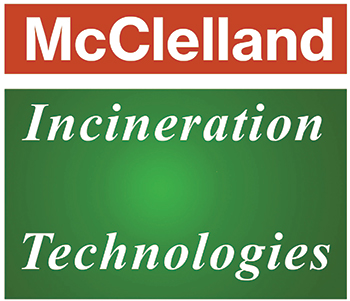 For Indian industries, navigating the complexities of hazardous waste management is not merely an operational task; it is a critical compliance mandate with significant environmental, legal, and reputational implications. Unlike general solid waste, hazardous waste poses substantial risks to human health and the environment due to its toxic, corrosive, flammable, or reactive properties. Understanding and rigorously adhering to the regulatory framework, particularly the Hazardous and Other Wastes (Management and Transboundary Movement) Rules, 2016, is indispensable for ensuring responsible industrial operation and avoiding severe penalties.
For Indian industries, navigating the complexities of hazardous waste management is not merely an operational task; it is a critical compliance mandate with significant environmental, legal, and reputational implications. Unlike general solid waste, hazardous waste poses substantial risks to human health and the environment due to its toxic, corrosive, flammable, or reactive properties. Understanding and rigorously adhering to the regulatory framework, particularly the Hazardous and Other Wastes (Management and Transboundary Movement) Rules, 2016, is indispensable for ensuring responsible industrial operation and avoiding severe penalties.
What Constitutes Hazardous Waste in India?
In India, hazardous waste is defined broadly by its characteristics (flammable, toxic, corrosive, reactive) or its origin from specific industrial processes listed in the schedules of the Hazardous and Other Wastes (Management and Transboundary Movement) Rules, 2016. This comprehensive regulation, managed primarily by the Central Pollution Control Board (CPCB) and respective State Pollution Control Boards (SPCBs), mandates a cradle-to-grave approach, placing strict responsibilities on the waste generator.
The Pillars of Compliance for Indian Industries
Effective hazardous waste management in India revolves around several key pillars of compliance:
Authorization: Every industrial unit generating, collecting, storing, transporting, or disposing of hazardous waste must obtain prior authorization from their respective SPCB. This is a foundational step.
Identification & Segregation: Proper identification and segregation of hazardous waste at the source are paramount. Wastes must be categorized according to their nature and properties, preventing mixing with non-hazardous waste.
Storage: Hazardous waste must be stored in designated, secure areas within the industrial premises, ensuring proper labeling, containment, and protection from adverse weather conditions. Storage limits and duration are strictly regulated.
Packaging & Labeling: Waste must be packaged in appropriate containers that prevent spills, leaks, or reactions. Each container must be clearly labeled with details such as the type of waste, its hazardous properties, and the generator’s information.
Transportation: Movement of hazardous waste requires proper documentation (Form 10 – Manifest System) and must be carried out by transporters authorized by the SPCB, using vehicles designed for safe carriage of hazardous materials.
Disposal & Treatment: This is the most critical stage. Industries are responsible for ensuring that their hazardous waste is treated and disposed of only at authorized common hazardous waste treatment, storage, and disposal facilities (TSDFs), or through approved on-site mechanisms. Methods include incineration, secured landfilling, recycling, recovery, and co-processing.
Record-Keeping & Reporting: Detailed records of hazardous waste generation, storage, treatment, and disposal must be maintained. Annual returns (Form 4) must be submitted to the SPCB by a stipulated deadline.
Non-compliance can lead to severe penalties, including hefty fines, legal action, closure of operations, and significant damage to an industry’s reputation.
The Indispensable Role of Incineration in Compliance
For many types of hazardous waste, particularly those with high organic content, toxicity, or bio-hazardous properties, incineration stands out as the most environmentally sound and compliant disposal method. Modern industrial incinerators are engineered to:
Destroy Hazardous Constituents: High temperatures (often exceeding 1000°C) ensure the complete thermal destruction of complex organic chemicals, pharmaceuticals, and pathogens, converting them into inert ash and gaseous emissions that are then meticulously treated.
Reduce Volume Drastically: Incineration significantly reduces waste volume, minimizing the burden on scarce landfill space.
Ensure Regulatory Adherence: With advanced Air Pollution Control Systems (APCS), modern incinerators can meet the strict emission standards stipulated by the CPCB, thereby ensuring compliance.
Mc Clelland Engineers: Your Partner in Compliant Hazardous Waste Solutions
At Mc Clelland Engineers Pvt. Ltd., we understand the intricate web of regulations governing hazardous waste in India. Since 1985, we have been at the forefront of designing and manufacturing advanced incineration and thermal desorption systems that empower Indian industries to navigate these compliance challenges effectively. As a leading incinerator manufacturer, our solutions are not just about waste destruction; they are about providing a pathway to complete regulatory adherence, environmental responsibility, and operational peace of mind. You can explore our robust and reliable incinerator solutions by visiting our official website, https://mcclellandindia.com/.
Our incinerators are specifically engineered to handle a wide range of hazardous waste types, offering features like multi-stage combustion, state-of-the-art flue gas treatment, and continuous emission monitoring, all crucial for meeting the stringent requirements of the Hazardous Waste Management Rules. We pride ourselves on our deep understanding of the Indian regulatory landscape and our ability to provide customized solutions that address specific industrial needs while ensuring environmental integrity. Discover more about our manufacturing capabilities and product range that champion compliance and sustainability at https://incineratormanufacturer.com/.
Charting a Course for Responsible Industrial Growth
For Indian industries, responsible hazardous waste management is a testament to sustainable growth. By proactively understanding the compliance landscape and investing in proven, technologically advanced solutions like incineration, businesses can protect their operations, their reputation, and the environment.

